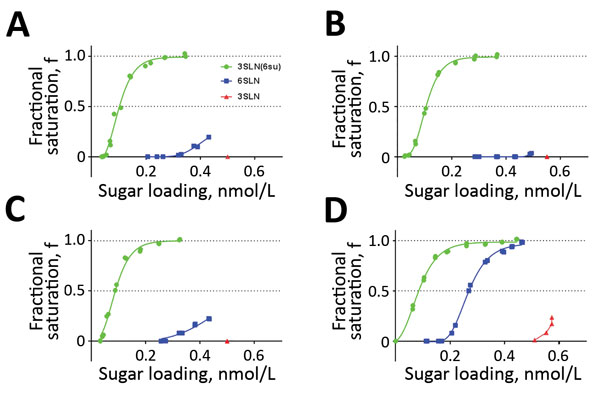Volume 25, Number 1—January 2019
Research
Association of Increased Receptor-Binding Avidity of Influenza A(H9N2) Viruses with Escape from Antibody-Based Immunity and Enhanced Zoonotic Potential
Figure 3

Figure 3. Receptor-binding profiles of wild-type influenza A(H9N2) viruses from Pakistan. Wild-type UDL-01/08 virus SKP and 3 contemporary wild-type viruses were generated by using reverse genetics, and receptor-binding to 3 receptor analogs was assayed by using biolayer interferometry. Sugars tested were 3SLN(6Su) (green), 6SLN (blue), and 3SLN (red). A) H9N2 A/chicken/Pakistan/UDL-01/2008; B) H9N2 A/chicken/LH-55/2014; C) H9N2 A/chicken/SKP-989/2015; D) H9N2 A/chicken/SKP-827/2016.
1Current affiliation: Imperial College London, London, UK.
2Current affiliation: Chinese Academy of Agricultural Sciences, Beijing, China.
Page created: December 18, 2018
Page updated: December 18, 2018
Page reviewed: December 18, 2018
The conclusions, findings, and opinions expressed by authors contributing to this journal do not necessarily reflect the official position of the U.S. Department of Health and Human Services, the Public Health Service, the Centers for Disease Control and Prevention, or the authors' affiliated institutions. Use of trade names is for identification only and does not imply endorsement by any of the groups named above.